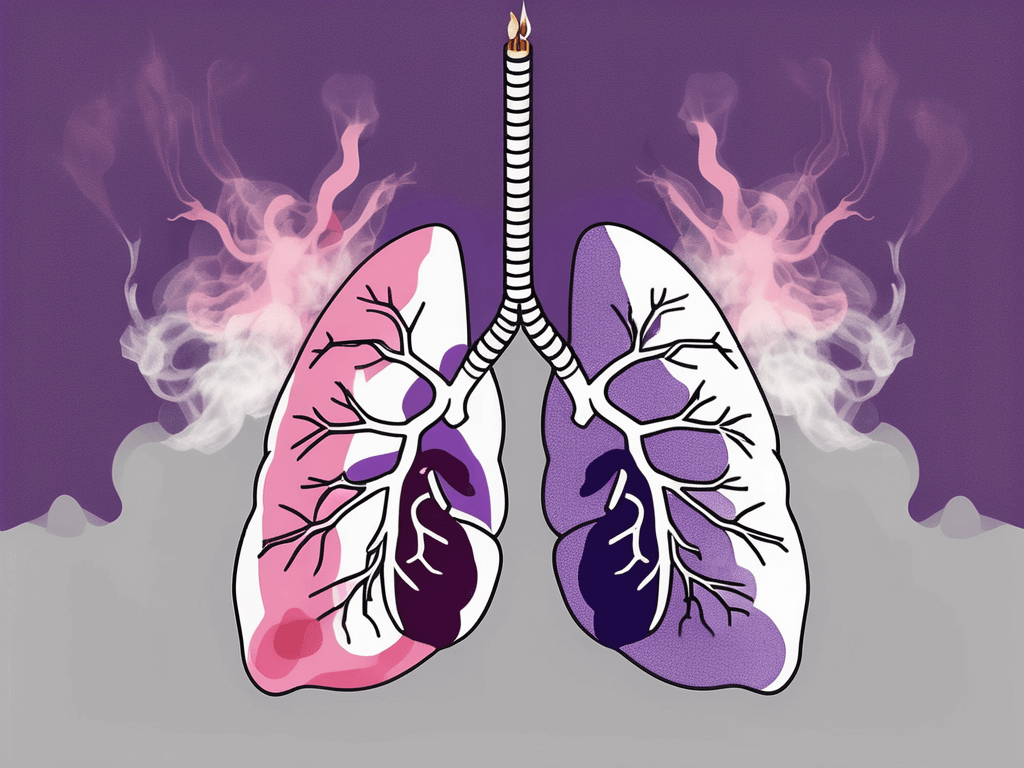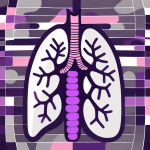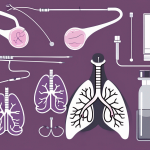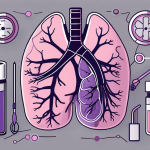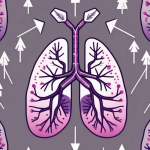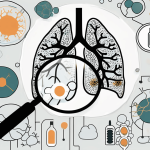Smoking poses a global health threat, causing a myriad of diseases, including lung cancer and COPD. This article delves into the anatomy of the lung, elucidating its intricate structure and vital role in respiration. It elucidates how smoke infiltrates the lungs, initiating a cascade of chemical reactions that lead to inflammation and damage. Short and long-term effects of smoking on lung health are explored, highlighting the grim reality of smokers’ lungs – discolored, tar-filled, and plagued by decreased function. However, the article emphasizes hope in quitting smoking, emphasizing the possibility of lung repair and improved well-being.
Smoking is a habit that affects millions of people worldwide. It is essential to understand the impact of smoking on lung health to make informed choices about our well-being. In this article, we will delve into the truth about smokers’ lungs, exploring the basics of smoking, the structure and function of the human lung, the pathway from smoke to lung damage, and finally, the harsh consequences that smoking has on our lung health.
Understanding the Basics: What is Smoking?
Smoking involves the inhalation of smoke produced by burning tobacco. It is a habit that is often associated with relaxation, pleasure, or stress relief. However, lurking beneath this seemingly harmless activity lies an array of chemicals and substances that can wreak havoc on your lungs.
Let’s delve deeper into the world of smoking and its impact on your health.
Smoking is a global epidemic that affects millions of people worldwide. It is a major cause of preventable diseases, including lung cancer, chronic obstructive pulmonary disease (COPD), heart disease, and stroke. The addictive nature of nicotine, a primary component of tobacco, makes quitting smoking a challenging task for many individuals.
The Composition of a Cigarette
A typical cigarette contains a complex mix of chemicals, including nicotine, tar, carbon monoxide, formaldehyde, and countless others. These chemicals, when inhaled, can have detrimental effects on your lung health.
Nicotine, a highly addictive substance, is responsible for the psychological and physical dependence on smoking. It stimulates the release of dopamine in the brain, creating a pleasurable sensation and reinforcing the habit. Tar, on the other hand, is a sticky residue that coats the lungs, impairing their ability to function properly. Carbon monoxide, a poisonous gas, reduces the amount of oxygen that can be carried by the blood, putting strain on the heart and other organs.
Formaldehyde, a known carcinogen, is released when tobacco is burned. This toxic chemical can cause damage to the DNA in your cells, increasing the risk of cancer development. These are just a few examples of the harmful substances found in cigarettes, highlighting the dangers of smoking.
The Act of Smoking: Inhalation and Exhalation
When you take a puff from a cigarette, the smoke enters your mouth and travels down your windpipe, known as the trachea, and into your lungs. The inhaled smoke contains harmful particles that settle inside your lung tissues, causing damage over time.
As the smoke reaches your lungs, it irritates the delicate lining of the airways, leading to inflammation and narrowing of the bronchial tubes. This constriction makes it harder for air to flow in and out of the lungs, resulting in shortness of breath, coughing, and wheezing.
Over time, the repeated exposure to smoke can lead to the development of chronic respiratory conditions such as bronchitis and emphysema. These conditions are characterized by the destruction of lung tissue and a decline in lung function, making everyday activities increasingly challenging.
It is important to note that smoking not only affects the smoker but also poses a significant risk to those exposed to secondhand smoke. Non-smokers who inhale the smoke exhaled by smokers are also at risk of developing similar health problems.
Understanding the basics of smoking is crucial in order to make informed decisions about your health. Quitting smoking is the best way to protect your lungs and reduce the risk of developing smoking-related diseases. If you or someone you know is struggling with quitting smoking, there are numerous resources and support systems available to help you on your journey to a smoke-free life.
The Human Lung: A Vital Organ
The lungs play a crucial role in our respiratory system, allowing us to breathe and obtain oxygen from the air we inhale.
But have you ever wondered about the intricate structure and fascinating function of this vital organ?
The Structure of the Lung
The lung is a complex organ composed of airways and small air sacs called alveoli. These tiny structures ensure that oxygen reaches our bloodstream and carbon dioxide is eliminated.
Let’s delve deeper into the anatomy of the lung. The airways, also known as bronchi, branch out from the trachea and extend into smaller tubes called bronchioles. These bronchioles further divide into even tinier passages called alveolar ducts, which eventually lead to the alveoli.
Now, picture the alveoli as tiny, grape-like clusters at the end of the bronchioles. These clusters are surrounded by a network of blood vessels, forming a close relationship between the respiratory and circulatory systems. This intricate network allows for efficient gas exchange, where oxygen is taken up by the bloodstream and carbon dioxide is released.
The Function of the Lung in Respiration
During respiration, the lungs expand and contract, enabling us to inhale fresh air rich in oxygen and exhale air carrying waste carbon dioxide. This cycle is vital for our body’s overall functioning.
How Does this Process Actually Happen?
When we inhale, the diaphragm, a dome-shaped muscle located at the base of the lungs, contracts and moves downward. This action expands the chest cavity, causing air to rush into the lungs through the airways. The oxygen in the inhaled air then diffuses across the thin walls of the alveoli and into the bloodstream.
On the other hand, when we exhale, the diaphragm relaxes and moves upward, pushing against the lungs. This forces the air out of the lungs, carrying with it the waste carbon dioxide that has accumulated in our bloodstream.
It’s truly remarkable how our lungs work tirelessly, day in and day out, to ensure that our body receives the oxygen it needs and gets rid of the waste it doesn’t. Without these incredible organs, life as we know it would simply not be possible.
The Path from Smoke to Lung Damage
Understanding how smoke enters the lungs and the subsequent chemical reaction is crucial to comprehending the impact of smoking on lung health.
How Smoke Enters the Lungs
As the smoke moves down the windpipe, it branches out into smaller tubes called bronchi, which then divide into even smaller passages known as bronchioles. These bronchioles lead directly to the alveoli, where the exchange of oxygen and carbon dioxide takes place.
The Chemical Reaction in the Lungs
Once inside the lungs, the harmful chemicals in the smoke cause inflammation and irritation. The toxic substances damage the delicate lung tissues and impair their ability to function effectively, leading to a host of health complications.
The Consequences of Smoking on Lung Health
Smoking has both short-term and long-term effects on the lungs. Let’s explore these consequences in detail.
Short-term Effects of Smoking on the Lungs
Even after a single cigarette, the airways become constricted, making it harder to breathe. You may experience coughing, wheezing, and shortness of breath, which are all signs of immediate lung irritation.
Long-term Effects of Smoking on the Lungs
Over time, smoking can lead to serious lung diseases such as chronic bronchitis, emphysema, and lung cancer. These conditions cause irreversible damage to the lungs, making it increasingly difficult to breathe and decreasing your overall quality of life.
The Reality of Smokers’ Lungs
Ever wondered what your lungs look like after years of smoking? The physical and functional changes in smokers’ lungs may surprise you.
The Physical Changes in Smokers’ Lungs
Smokers’ lungs may appear discolored, with a darkened, tar-filled appearance. The air sacs lose their elasticity, and the airways become thickened and narrowed, further obstructing the flow of air.
The Functional Changes in Smokers’ Lungs
As smoking damages the lung tissues and impairs their function, the lungs become less efficient at exchanging oxygen and carbon dioxide. This can lead to persistent breathlessness, fatigue, and an increased risk of infections.
It is important to recognize the impact of smoking on lung health and the severe consequences it can have on our well-being. Quitting smoking is the best way to start repairing the damage done to your lungs and improve your overall health. Remember, it is never too late to make a positive change for your lungs and your future well-being. Take that first step towards a smoke-free life today!

